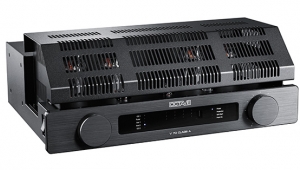| Columns Retired Columns & Blogs |
I was surprised several months ago when I noticed several L-509X amplifiers posted for sale at TMR Audio, and I suspected that a new flagship had launched. Indeed, the L-509Z was available and some audiophiles were likely looking to upgrade to the latest and greatest.
For me, the L-509X proved my offramp from the upgrade highway. I have it paired with Joseph Audio Pulsar loudspeakers, and the combination is as good as I could ever have hoped for. Expensive, but not beyond reason and within my window of affordable. If I ever manage to hit Powerball, there is likely a combination of Gryphon amplification and Rockport Technologies loudspeakers that would beckon. Even so, I certainly never feel deprived when the L-509X and Pulsars fill the room with music.
My best wishes to those who audition or purchase the Luxman L-509Z. Based on my experience, you will find yourself in the presence of a truly great amplifier. In addition, it may well represent the point at which the curve of diminishing returns arcs almost vertical. For the vast majority of us, that's likely the best target to have when assembling an audio system.










































